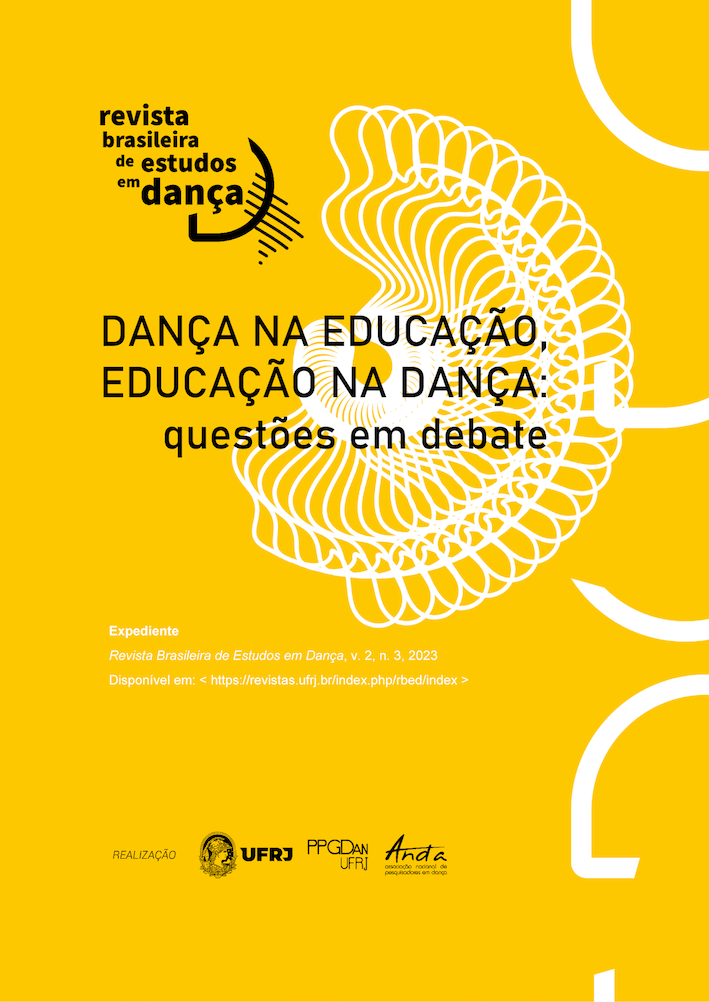This is an outdated version published on 2023-09-02. Read the most recent version.
GAGA: em busca do comum
DOI:
https://doi.org/10.58786/rbed.2023.v1.n3.55361Abstract
Nesse texto parto do interesse em promover uma reflexão sobre a linguagem de movimento gaga,desenvolvida através do coreógrafo israelense Ohad Naharin, no início dos anos 90. Artista de intervenções, choques e acontecimentos propõe na sua linguagem e obras o contato com outros mundos, onde as regras são diferentes. Dessa forma, utilizo a perspectiva da observação, experiência em workshops, participação em aulas regulares, análise de materiais bibliográficos, metodológicos, vídeos, entrevistas e espetáculos, com a pretensão de identificar o comum que atinge a sua prática.
Downloads
Additional Files
Published
2023-09-02
Versions
- 2024-05-09 (3)
- 2023-12-01 (2)
- 2023-09-02 (1)
How to Cite
SOUSA, Demmy Cristina Ribeiro de. GAGA: em busca do comum. Brazilian Journal of Dance Research, [S. l.], v. 2, n. 3, p. 355–380, 2023. DOI: 10.58786/rbed.2023.v1.n3.55361. Disponível em: https://revistas.ufrj.br/index.php/rbed/article/view/55361. Acesso em: 23 nov. 2024.
Issue
Section
Artigos / Fluxo Contínuo
License
Authors who publish in the Revista Brasileira de Estudos em Dança are
responsible for the content of signed articles and retain copyright.
They grant the journal the right of first publication with the work simultaneously
licensed under the Creative Commons Attribution-NonCommercial 4.0 License
(Open Archives Initiative - OAI). This feature, used for open-access journals,
allows sharing work for non-commercial purposes and acknowledges
authorship. If the text is later published in another vehicle, the author
must inform that it was initially published as an article in the Revista Brasileira
de Estudos em Dança. Therefore, even if the journal owns the first publication,
authors are entitled to publish their work in institutional repositories or on
their personal pages, even if the editorial process has not been completed.
The journal reserves the right to make normative, orthographic, and grammatical changes to maintain the language standard, respecting the authorial style.

